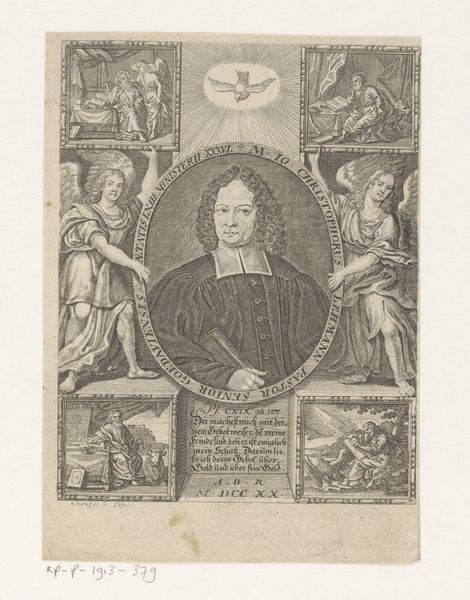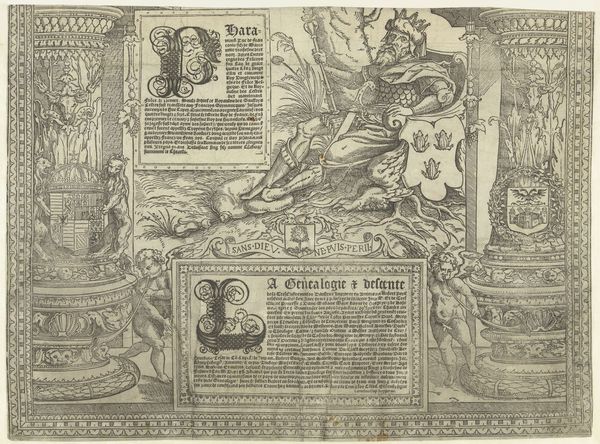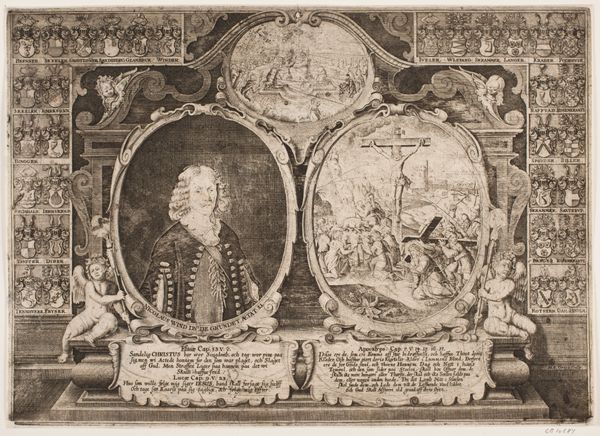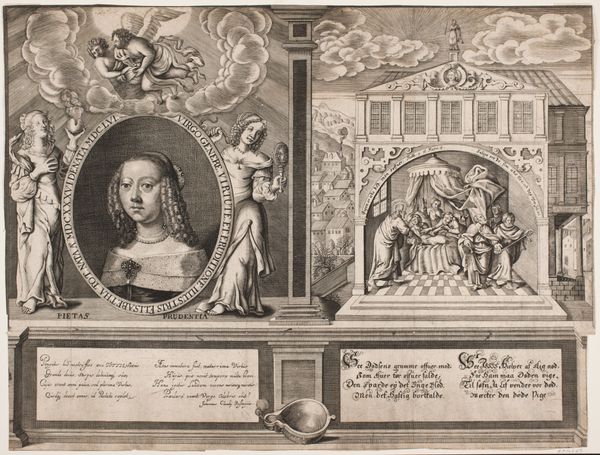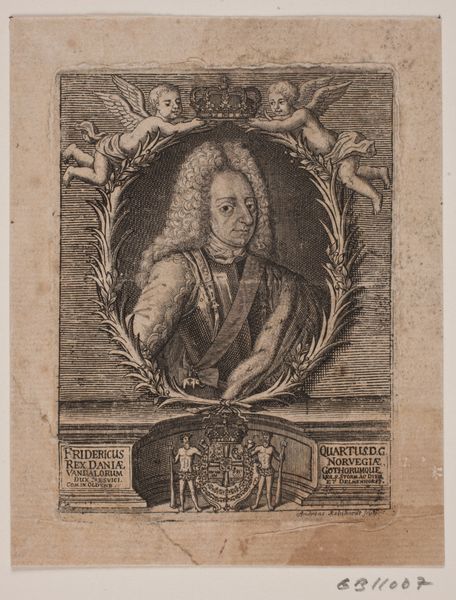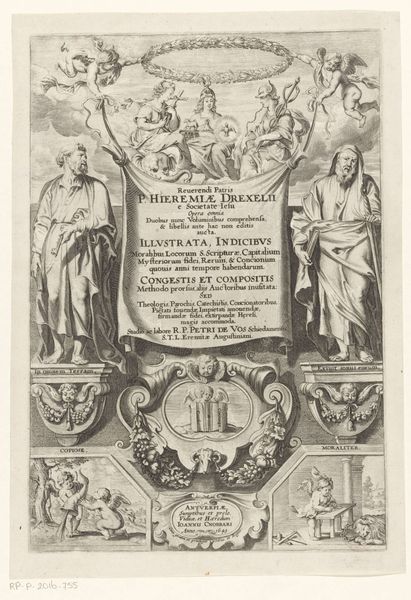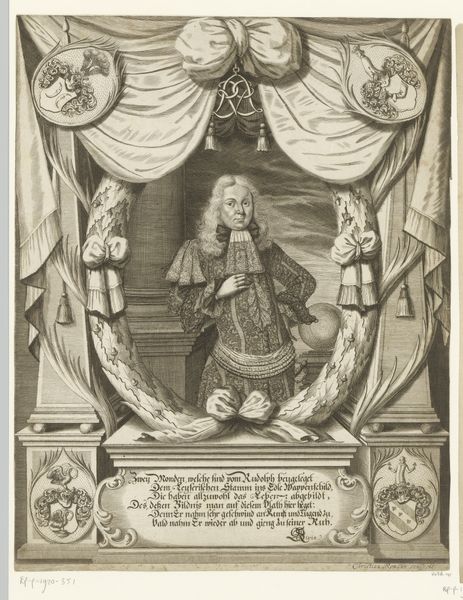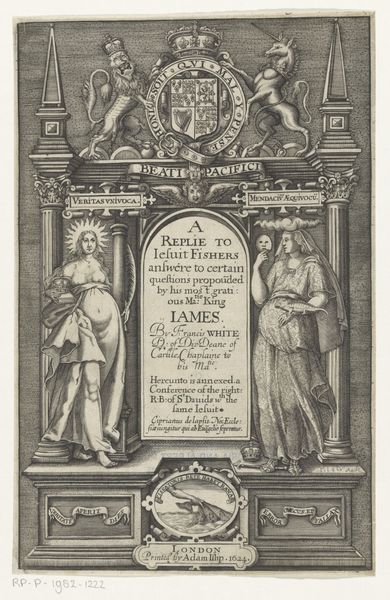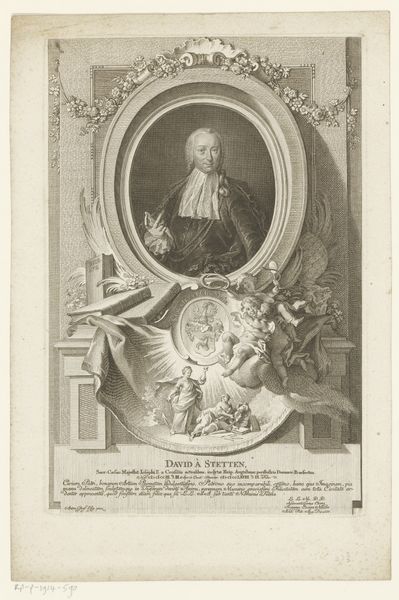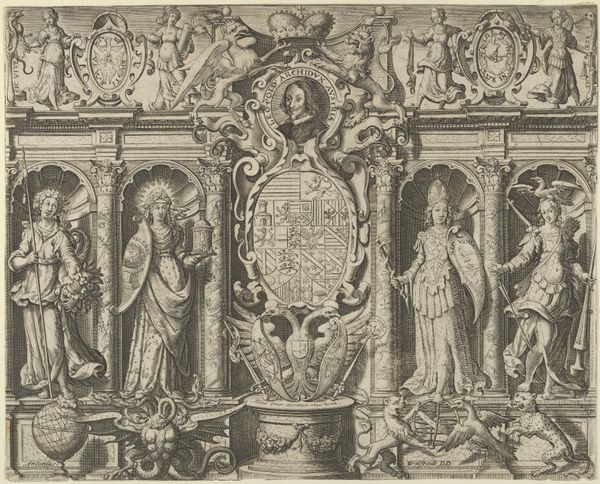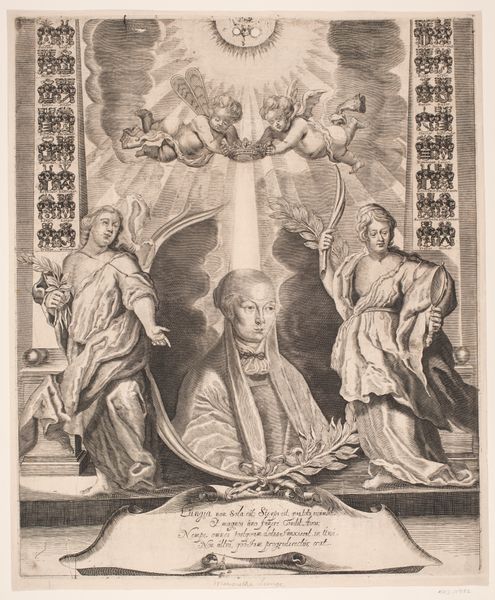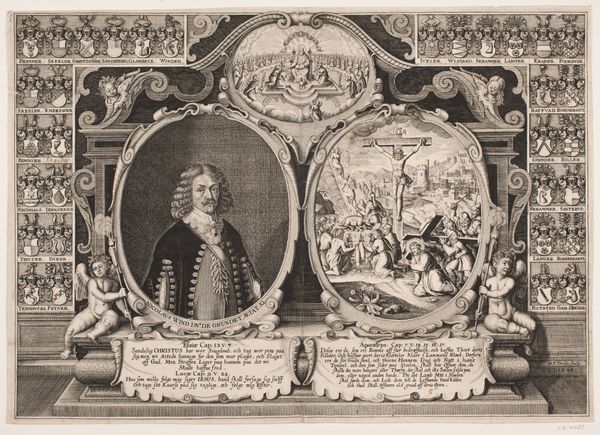
Gregers Friis til Ålstrup samt Kristus på korset og Kristi opstandelse. Omgivet af aneskjolde 1656
0:00
0:00
print, engraving
#
baroque
# print
#
figuration
#
line
#
history-painting
#
engraving
Dimensions: 207 mm (height) x 300 mm (width) (plademaal)
Editor: So, this print is called "Gregers Friis til Ålstrup samt Kristus på korset og Kristi opstandelse. Omgivet af aneskjolde," made in 1656 by Hans Andreas Greys. It's an engraving. It seems really dense with information, almost like a family tree intertwined with religious symbolism. What strikes you when you look at it? Curator: The density you point out is exactly what draws me in. It’s a potent representation of Baroque sensibilities – the theatricality, the intertwining of the earthly and the divine, the blatant display of power through lineage. It practically begs us to consider its social context. Whose story is being told here, and why is it being told in this way? Editor: You mean like, what did it mean to showcase your family’s crest alongside images of Christ’s crucifixion and resurrection? Curator: Precisely. The juxtaposition isn’t accidental. Think about the Reformation's impact on art, and how the rising merchant classes adopted symbols of power traditionally reserved for royalty. Heraldry was deeply connected to social identity and political power. Now, consider Gregers Friis positioning himself within this symbolic framework. What does that tell us about his ambitions? Is he simply memorializing himself or trying to legitimize a specific status? Editor: It's almost like he is trying to align his family’s legacy with a sense of divine right, by including a family portrait. So, the inclusion of those shields gives insight into issues of power and status in the 17th century? Curator: Absolutely! And consider how accessible such imagery was, given its medium as a print. Who was this image intended for? How did the distribution of images impact social and political ideas and values at the time? Remember, these images participated in forming collective memory and influencing identities. Editor: I never considered prints in that way - more than just artworks, they become vehicles for spreading ideologies and building identities. Curator: Exactly! And the study of these works gives a powerful insight into history.
Comments
No comments
Be the first to comment and join the conversation on the ultimate creative platform.
